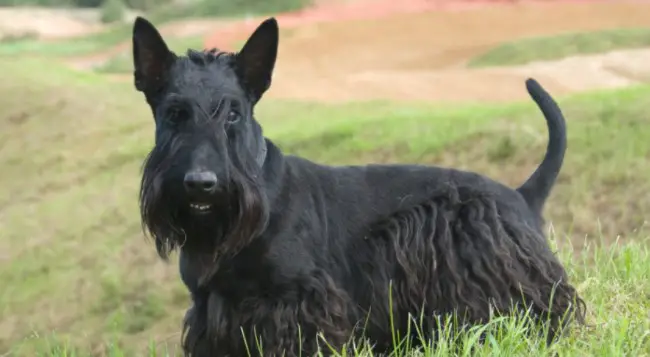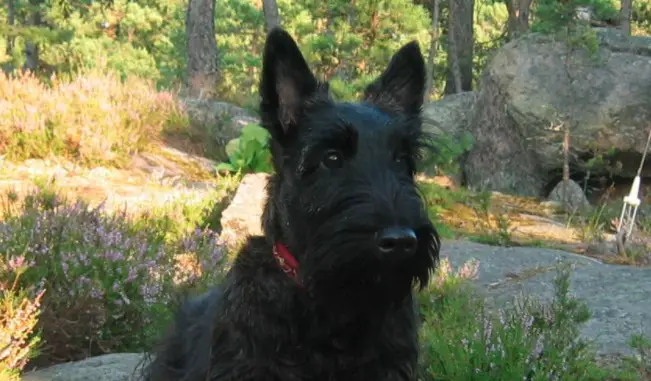This proud, capricious, but loyal, and intelligent dog is considered a sign of true gentleness and good taste of its owner.
Character
Scottish Terrier: description of the breed, character based on the embodiment of English restraint and aristocracy. In childhood, he loves to be mischievous, but with age, true equanimity appears. The pet is by nature well-mannered, but with a complex and stubborn character, if you do not engage in his upbringing from an early age. He treats strangers with prejudice, aggression is not uncommon, but he does not like souls in his family and manifests himself with them in the best qualities.
Scottish Terrier is intolerant of other animals, so you should be careful to bring such a breed into a house where there are already pets.
Despite this, the Scottish Terrier is a playful, cheerful, and loyal favorite. If necessary, he can stand up for the owner, will be an excellent guard for the house, no worse than special guard dogs. When training a dog, it is important to know that he will obey only the one in whom he sees a friend and partner. The use of physical force in relation to the pet is excluded. Otherwise, the dog will be stubborn and will not follow the command. Having established a trusting contact with the dog, then you will forever find a loyal, courageous, and friendly companion.
The Scottish Terrier has become a domestic breed, but has not lost its original instincts – such a dog will become an excellent rat-catcher and an assistant in burrowing hunting.
Care and maintenance
The Scottish Terrier gets along well both in an apartment and in a country house. Like other wire-haired dogs, Scottish Terrier needs regular grooming and grooming approximately 2 times a year. The pet’s coat should be brushed, and the eyebrows and beard should be brushed regularly. It is recommended to wear overalls in bad weather. Wash your dog as it gets dirty, but not too often.
It is recommended to walk the dog every day. It is necessary to provide the dog with the opportunity to run without a leash and play enough so that he does not bring much trouble indoors, grows up healthy and happy. The puppy’s first feeding begins with low-fat kefir. As the pet grows older, low-fat beef, home-made chicken, low-fat cottage cheese are added to the diet in small portions. It is allowed to feed the puppy with offal, excluding the heart.
An adult pet should choose a balanced diet. You can give sea fish, fruits, berries, additives to a small amount of porridge (rice, buckwheat) meat products. It is important not to overfeed vitamins and minerals in the diet, to observe the food intake.
At any age, you should not feed Scottish Terrier lamb, pork, pastry, and pasta. Minced meat, river fish, and flour products are not recommended.
Pros
- Scottish Terrier are very attached to their owner and love him for life;
- these kids make excellent hunters and guards;
- miniature and decorative: funny character and cute dog face will not leave anyone indifferent;
- the relative ease of care;
- good health and the ability to leave a pet – one dog is by nature self-sufficient and will not miss the owner too much;
- you can keep a dog even in a small apartment.

Cons
- due to excessive activity, the puppy will quickly gnaw everything that the imprudent owner left on the floor;
- the dog needs constant communication and long walks;
- the process of scotch terrier training is not an occupation for an inexperienced breeder.

